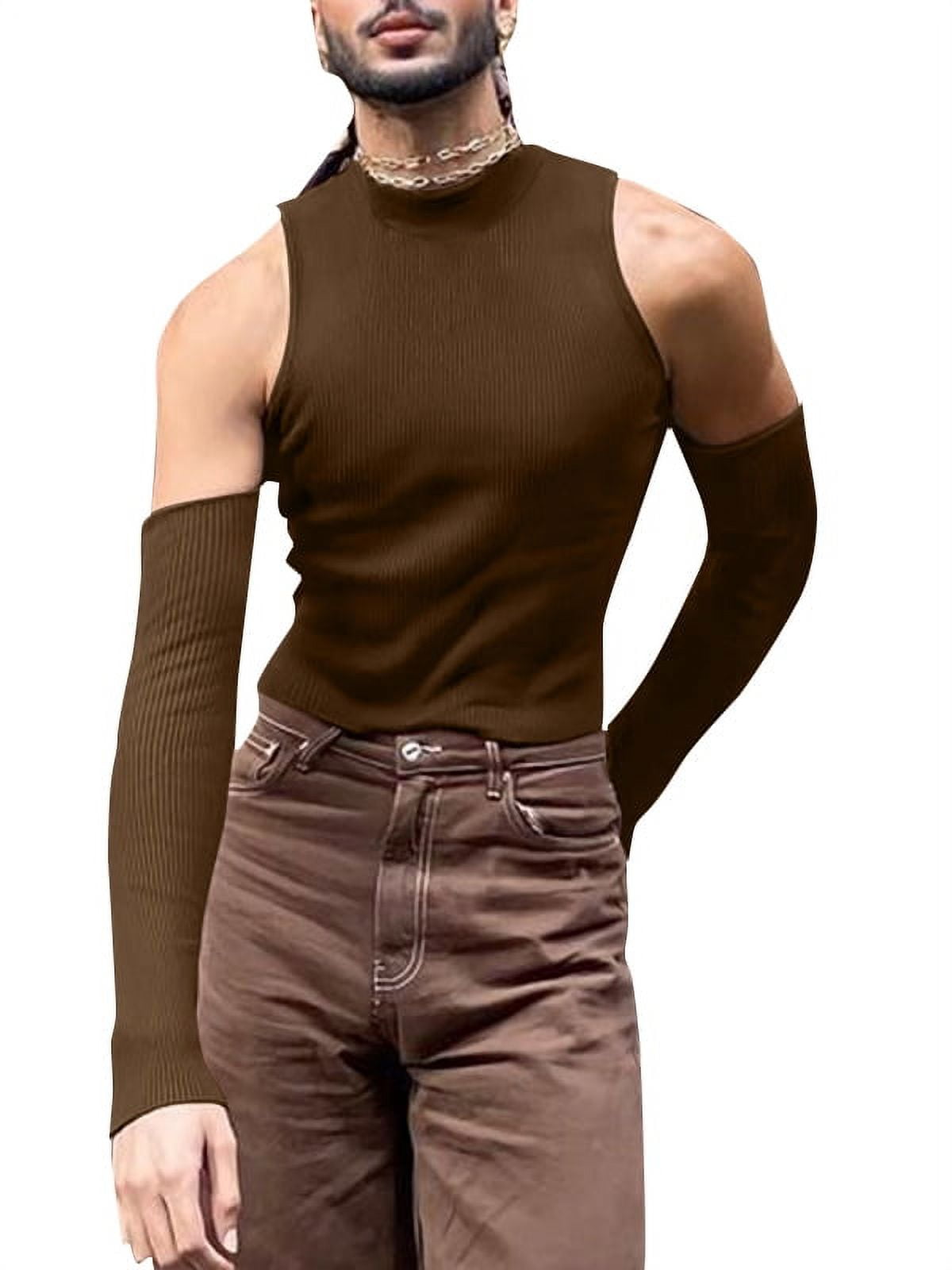How to cut sleeves off shirt? Cutting the sleeves off a shirt is a simple DIY technique that can transform a regular shirt into a trendy, sleeveless garment. This alteration is particularly popular during warmer months or for creating a unique, edgy look. Learning how to cut sleeves off a shirt allows you to personalize your wardrobe and breathe new life into old or oversized shirts. In this comprehensive guide, we will provide step-by-step instructions on how to cut sleeves off a shirt, along with useful tips and considerations. By following these guidelines, you can confidently create customized sleeveless shirts that suit your style.

Gathering the Required Materials:
- Shirt: Choose a shirt that you want to transform into a sleeveless garment. This can be an old shirt, an oversized shirt, or a button down shirts that you wish to add your personal touch to.
- Scissors: Use a pair of sharp fabric scissors, specifically designed for cutting through fabric cleanly and accurately.
- Marking Tool (optional): A washable fabric marker or chalk can be helpful for marking the desired cut line before cutting.
Preparing the Shirt:
- Washing and Ironing: Before starting the cutting process, wash and iron the shirt to ensure it is clean and wrinkle-free. This will help you visualize the sleeves’ placement and ensure a neater cut.
- Trying on the Shirt: Put the shirt on to determine the desired sleeve length. Have a mirror nearby to check the fit and adjust the cut line accordingly.
Marking and Cutting the Sleeves:
- Sleeve Length: Decide on the desired sleeve length, whether it be a traditional tank top style or an asymmetric cut. For a classic tank top look, mark the desired length, leaving a small allowance for any adjustments during the cutting process.
- Equal Measurements: To ensure symmetry, fold the shirt in half vertically, aligning the shoulder seams and sleeves. Use the folded side as a guide to mark the sleeve length, ensuring the cut line is even on both sides.
- Cut Along the Marked Line: Carefully cut along the marked line, starting from the shoulder seam down towards the underarm. Cut through both layers of the shirt, ensuring a clean and straight cut.
- Adjustments and Fine-Tuning: Once both sleeves are cut, try on the shirt again to assess the fit and make any necessary adjustments. Trim off any excess fabric if required or refine the curved edges for a neater finish.

Finishing Touches and Styling:
- Hemming (optional): If desired, you can hem the cut edges of the sleeves for a more polished look. Fold the raw edge inside and sew along the hem using a sewing machine or hand stitch with a needle and thread.
- Distress or Fray the Cut Edges (optional): If you prefer a more relaxed and edgy look, gently rub the cut edges of the sleeves with sandpaper or simply let them fray naturally over time after multiple washes.
- Styling Options: Experiment with different ways to style your newly sleeveless shirt. You can layer it over a tank top or bandeau for added modesty or wear it on its own for a breezy and casual look. Customize the shirt further by tying knots, adding embellishments, or distressing other areas to reflect your personal style.
Advantages of men’s short sleeves
Men’s short-sleeve shirts are wardrobe staples that offer numerous advantages in terms of style, comfort, versatility, and practicality. Whether you’re dressing for a casual outing, a professional setting, or a warm-weather destination, short-sleeve shirts provide a range of benefits that make them a popular choice among men.

Comfort and Warm-Weather Wear:
- Breathability: One of the primary advantages of men’s short-sleeve shirts is their breathability. The shorter sleeves allow for better airflow and ventilation, keeping you cool and comfortable in warm weather or during physical activities.
- Lightweight Fabrics: Short-sleeve shirts are often made from lightweight materials such as cotton, linen, or blends. These fabrics further enhance comfort by providing a soft and breathable feel against the skin, making them ideal for the hot summer months.
- Mobility and Ease of Movement: The absence of long sleeves allows for better mobility and ease of movement, making short-sleeve shirts a convenient choice for active individuals or those engaged in physical work.
Versatility and Style:
- Casual and Relaxed Look: Short-sleeve shirts effortlessly lend themselves to a casual and relaxed aesthetic. They can be styled with jeans, chinos, or shorts for a laid-back look suitable for weekends, vacations, or casual outings.
- Dressing Up or Down: While short-sleeve shirts are inherently casual, they can also be dressed up for a more refined look. Pairing them with tailored trousers, blazers, or suit jackets can create a smart-casual or semi-formal ensemble appropriate for various occasions.
- Variety of Colors and Patterns: Men’s compression shirts come in a wide range of colors, patterns, and prints. This allows for experimentation and personal expression through fashion, adding vibrancy and style to your wardrobe.

Versatility in Professional Settings:
- Business Casual Attire: Men’s short-sleeve shirts can be part of a business casual wardrobe, offering a more relaxed alternative to traditional long-sleeve shirts. Pairing a well-fitted short-sleeve shirt with dress pants or khakis can create a polished yet comfortable office look.
- Summer-Friendly Professional Attire: In warm-weather climates or during the summer season, short-sleeve shirts can be a suitable option for maintaining professional attire. They offer a professional appearance while keeping you cool and comfortable throughout the workday.
Practicality for Travel:
- Packability: Men’s short-sleeve shirts are lightweight and packable, making them an ideal choice for travel. They take up less space in your luggage and are less prone to wrinkling compared to long-sleeve shirts.
- Versatile Vacation Style: Short-sleeve shirts can easily transition from day to night during vacation or travel. Whether exploring during the day or going out for a casual dinner, these shirts allow you to maintain comfort while looking stylish throughout your journey.
Conclusion:
Cutting the sleeves off a shirt is a simple and satisfying DIY project that allows you to transform your wardrobe and create fashionable sleeveless garments. By following the step-by-step instructions outlined in this guide, you can confidently cut sleeves off a shirt and customize it according to your desired style and preferences. Whether you’re opting for a classic tank top look or experimenting with distressed edges, the possibilities for personalization are endless. Remember to take your time, be careful when cutting, and make adjustments as needed to achieve the desired fit. Embrace your creativity and enjoy the process of transforming an ordinary shirt into a unique and customized sleeveless garment.

